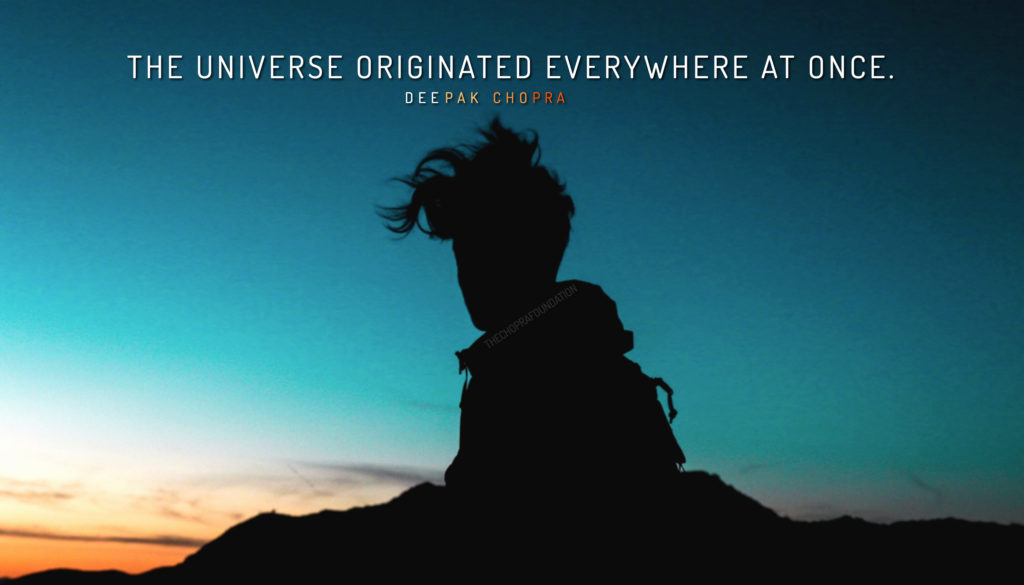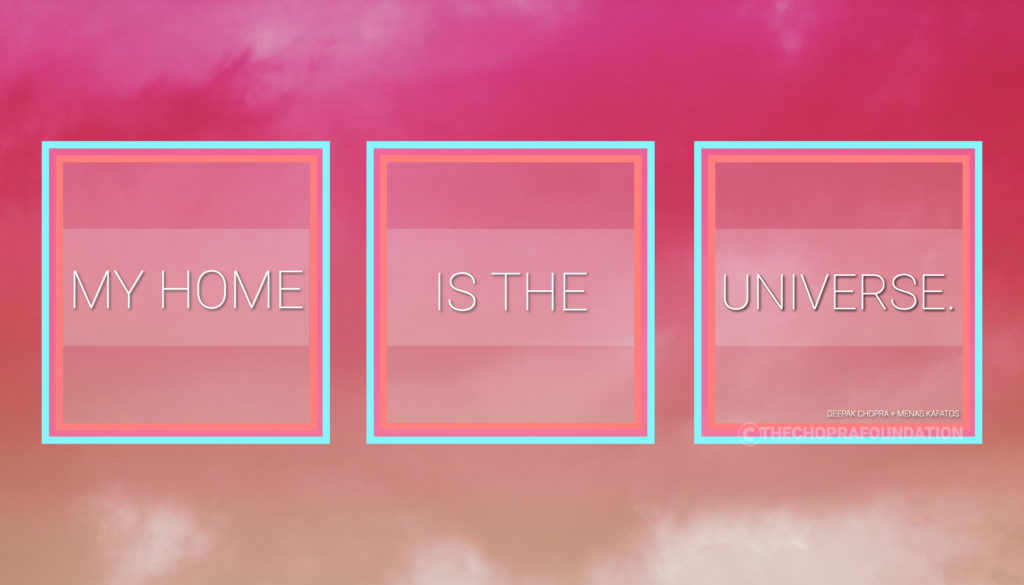By Deepak Chopra MD, Lizabeth Weiss, BA, Nancy S. Cetel, MD, Danielle Weiss, MD, Joseph B. Weiss, MD,
When the average American goes to the doctor, shows up at the ER, or enters the hospital, the risks and complexities of our healthcare system strike home vividly. Besides the expense of care and the intricate tests and procedures a patient faces, there is a widely under-reported risk of medical mistakes and “adverse events,” as they care called, which can range from minor to disastrous.
The new idea whose time has come is the patient advocate, someone who represents the patient’s best interest in any medical situation. An advocate might be a well-meaning relative who helps an older patient understand what’s going on, stepping in to do attendant tasks like picking up prescriptions and organizing medical bills. But more and more we see the need for an advocate who is professionally trained to buffer the mounting risks in a healthcare system where less and less time is spent between doctor and patient, raising the possibility of a wide range of bad outcomes.
The public has limited knowledge of the relevant facts:
- Medical errors are estimated to cause 440,000 deaths per year in U.S. hospitals alone.
- The total direct expense of adverse events is estimated at hundreds of billions of dollars annually.
- Indirect expenses such as lost economic productivity from premature death and unnecessary illness exceeds one trillion dollars per year.
 What the patient is all too aware of is the doctor visit that goes by in the blink of an eye. A 2007 analysis of optimal primary-care visits found that they last in total 16 minutes on average. From 1 to 5 minutes is spent per topic discussed. Although a visit to a primary-care physician or specialist has increased to 20 minutes, a shift in a doctor’s workload in recent years, some of it mandated by law, finds more time being allocated to computer and desk work, such as entering data in the Electronic Health Record (EHR).
What the patient is all too aware of is the doctor visit that goes by in the blink of an eye. A 2007 analysis of optimal primary-care visits found that they last in total 16 minutes on average. From 1 to 5 minutes is spent per topic discussed. Although a visit to a primary-care physician or specialist has increased to 20 minutes, a shift in a doctor’s workload in recent years, some of it mandated by law, finds more time being allocated to computer and desk work, such as entering data in the Electronic Health Record (EHR).
The actual face-to-face time with a doctor or other health care provider actually comes down to 7 minutes on average. Therefore, a patient advocate clearly has a huge gap to fill. The advocate can begin by simply observing the visit or procedure to make sure that simple mistakes and errors in communication don’t occur. Many of these are unavoidable byproducts of nurses changing shifts, hospital doctors on rotation, etc.
But in an aging population, the advocate’s efforts become even more critical. An advocate can take time to take a detailed patient history, something often lacking in our rushed system. They can translate information into the patient’s first language as needed, calm nerves in the stressful and unfamiliar surroundings of a hospital or clinic, and thereby bring to the fore the questions and answers that need to be transmitted. In the stress of a medical event, it’s very common for patients, particularly the elderly, to be so flustered and anxious that they forget to ask important questions or give important information.
Not everything is potentially positive if patient advocates become a standard part of health care. If they have their own agenda because their employer is a hospital or insurance company, the patient’s best interests may not be uppermost. One anticipates antagonism between the advocate and the doctor, who isn’t used to third-party input and values his autonomy. And if the advocate isn’t calm, professional, and common-sensical, adding another anxious person in the examining room would be a detriment.
Still, we feel that the benefits far outweigh the potential downside. The key is for advocates to be accepted as a positive extension of the existing system, not an opposition party. A concerted effort to standardize a curriculum and certification for advocates is now being developed. It needs all the support it can get. The creation of an educated, licensed workforce of professional advocates can and should be an integral part of improving the safety and efficacy of our national health care. With your eyes now opened, you’ll see how great the need is the next time you need to see the doctor.
Deepak Chopra MD, FACP, Clinical Professor of Medicine, University of California, San Diego, Chairman and Founder, The Chopra Foundation, Co-Founder, The Chopra Center for Wellbeing
Lizabeth Weiss BA, Research Associate, The Chopra Center for Wellbeing, Assistant Director, Rancho Santa Fe Senior Center
Nancy S. Cetel, MD, President and Founder, Speaking of Health and specialist in women’s health and reproductive endocrinology.
Danielle Weiss, MD, FACP Clinical Assistant Professor of Medicine, University of California, San Diego, Medical Director & Founder, Center for Hormonal Health & Well-Being
Joseph B. Weiss, MD, FACP, Clinical Professor of Medicine, University of California San Diego.
References: Brennan TA, Leape LL, Laird NM, et al. Incidence of adverse events and negligence in hospitalized patients. Results of the Harvard Medical Practice Study I. N Engl J Med 1991;324:370–6.
Kohn LT, Corrigan J, Donaldson MS. To err is human: building a safer health system. Washington DC: National Academy Press, 2000.
Department of Health and Human Services. Adverse events in hospitals: national incidence among Medicare beneficiaries. 2010. http://oig.hhs.gov/oei/reports/oei-06-09-00090.pdf.
A New, Evidence-based Estimate of Patient Harms Associated with Hospital Care James, John T. PhD Journal of Patient Safety: September 2013 – Volume 9 – Issue 3 – p 122–128 doi: 10.1097/PTS.0b013e3182948a69
Makary MA, Daniel M. Medical error-the third leading cause of death in the US. BMJ 2016;353:i2139. doi:10.1136/bmj.i2139
Measurement of patient safety: a systematic review of the reliability and validity of adverse event detection with record review. Mirelle Hanskamp-Sebregts, Marieke Zegers, Charles Vincent, Petra J van Gurp, Henrica C W de Vet, Hub WollersheimPublished 22 August, 2016 http://bmjopen.bmj.com/content/6/8/e011078.full
Weismann JS, Schneider EC, Weingart SN, et al. Comparing patient-reported hospital adverse events with medical records reviews: Do patients know something that hospitals do not? Ann Intern Med. 2008; 149: 100–108.
Overview of medical errors and adverse events. Maité Garrouste-Orgeas François Philippart, Cédric Bruel, Adeline Max, Nicolas Lau and B Misset Annals of Intensive Care 20122:2
DOI: 10.1186/2110-5820-2-2 Published 16 February 2012
Valentin A, Capuzzo M, Guidet B, Moreno R, Metnitz B, Bauer P, Metnitz P: Errors in administration of parenteral drugs in intensive care units: multinational prospective study. BMJ 2009, 338: b814. 10.1136/bmj.b814
Ridley SA, Booth SA, Thompson CM: Prescription errors in UK critical care units. Anaesthesia 2004, 59: 1193–1200. 10.1111/j.1365-2044.2004.03969.x
Garrouste-Orgeas M, Timsit JF, Vesin A, Schwebel C, Arnodo P, Lefrant JY, Souweine B, Tabah A, Charpentier J, Gontier O, et al.: Selected medical errors in the intensive care unit: results of the IATROREF study: parts I and II on behalf of the Outcomerea study group. Am J Respir Crit Care Med 2010, 181: 134–142. 10.1164/rccm.200812-1820OC
Garrouste-Orgeas M, Soufir L, Tabah A, Schwebel C, Vesin A, Adrie C, Thuong M, Timsit JF: A multifaceted program for improving quality of care in ICUs (IATROREF STUDY) on behalf of the Outcomerea study group. Critical Care Med, in press.
Overview of medical errors and adverse events. Maité Garrouste-Orgeas, François Philippart, Cédric Bruel, Adeline Max, Nicolas Lau and B Misset Annals of Intensive Care20122:2
DOI: 10.1186/2110-5820-2-2 Published 16 February 2012
Kennerly DA, Kudyakov R, da Graca B, et al. Characterization of adverse events detected in a large health care delivery system using an enhanced Global Trigger Tool over a five-year interval. Health Serv Res 2014;49:1407–25. doi:10.1111/1475-6773.12163 Google Scholar
Rutberg H, Borgstedt Risberg M, Sjodahl R, et al. Characterisations of adverse events detected in a university hospital: a 4-year study using the Global Trigger Tool method. BMJ Open 2014;4:e004879. doi:10.1136/bmjopen-2014-004879
Christiaans-Dingelhoff I, Smits M, Zwaan L, et al. To what extent are adverse events found in patient records reported by patients and healthcare professionals via complaints, claims and incident reports? BMC Health Serv Res 2011;11:49. doi:10.1186/1472-6963-11-49 [CrossRef][Medline]Google Scholar
Classen DC, Resar R, Griffin F, et al. ‘Global Trigger Tool’ shows that adverse events in hospitals may be ten times greater than previously measured. Health Aff (Millwood) 2011;30:581–9. doi:10.1377/hlthaff.2011.0190
Sari AB, Sheldon TA, Cracknell A, et al. Extent, nature and consequences of adverse events: results of a retrospective casenote review in a large NHS hospital. Qual Saf
J Health Care Finance. 2012 Fall;39(1):39-50.
The economics of health care quality and medical errors. Andel C1, Davidow SL, Hollander M, Moreno DA. https://www.ncbi.nlm.nih.gov/pubmed/23155743




 What the patient is all too aware of is the doctor visit that goes by in the blink of an eye. A 2007 analysis of optimal primary-care visits found that they last in total 16 minutes on average. From 1 to 5 minutes is spent per topic discussed. Although a visit to a primary-care physician or specialist has increased to 20 minutes, a shift in a doctor’s workload in recent years, some of it mandated by law, finds more time being allocated to computer and desk work, such as entering data in the Electronic Health Record (EHR).
What the patient is all too aware of is the doctor visit that goes by in the blink of an eye. A 2007 analysis of optimal primary-care visits found that they last in total 16 minutes on average. From 1 to 5 minutes is spent per topic discussed. Although a visit to a primary-care physician or specialist has increased to 20 minutes, a shift in a doctor’s workload in recent years, some of it mandated by law, finds more time being allocated to computer and desk work, such as entering data in the Electronic Health Record (EHR).